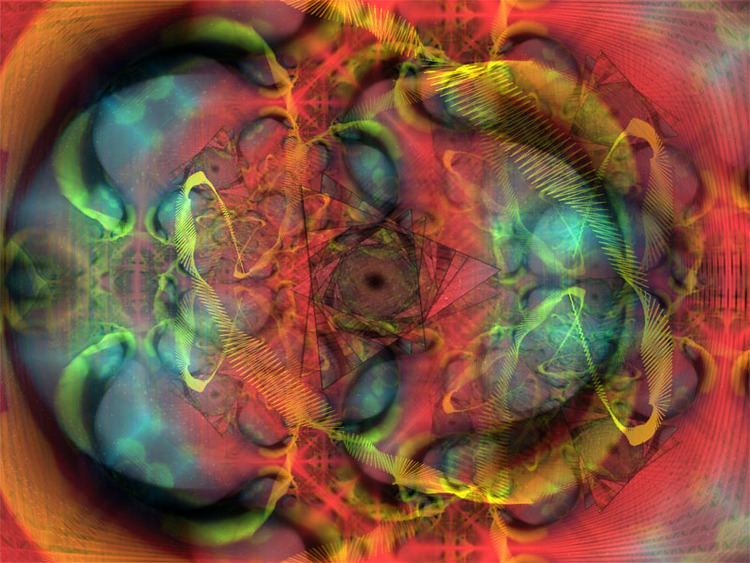 | ||
Music visualization or music visualisation, a feature found in electronic music visualizers and media player software, generates animated imagery based on a piece of music. The imagery is usually generated and rendered in real time and in a way synchronized with the music as it is played.
Contents
- Definition
- History
- List of electronic music visualizers
- List of music visualization software
- List of media players supporting visualization
- References
Visualization techniques range from simple ones (e.g., a simulation of an oscilloscope display) to elaborate ones, which often include a plurality of composited effects. The changes in the music's loudness and frequency spectrum are among the properties used as input to the visualization.
Definition
"Music visualization" can be defined, in contrast to previous existing pre-generated music plus visualization combinations (as for example music videos), by its characteristic as being real-time generated. Another possible distinction is seen by some in the ability of some music visualization systems (such as Geiss' MilkDrop) to create different visualizations for each song or audio every time the program is run, in contrast to other forms of music visualization (such as music videos or a laser lighting display) which always show the same visualization.
History
The first electronic music visualizer was the Atari Video Music introduced by Atari Inc. in 1976, and designed by the initiator of the home version of Pong, Robert Brown. The idea was to create a visual exploration that could be implemented into a Hi-Fi stereo system. It is described in US 4081829 . In Great Britain music visualization was first pioneered by Fred Judd.
Music and audio players were available on early home computers, Sound to Light Generator (1985, Infinite Software) used the ZX Spectrum's cassette player for example. The 1984 movie Electric Dreams prominently made use of one, although as a pre-generated effect, rather than calculated in real-time.
For PC/DOS one of the first modern music visualization programs was the open-source, multi-platform Cthugha in 1993. In the 1990s the emerging demo and tracker music scene pioneered the real-time technics for music visualization on the PC platform; resulting examples are Cubic player (1994), Inertia Player (1995) or in general their real-time generated Demos.
Subsequently, PC computer music visualization became widespread in the mid to late 1990s as applications such as Winamp (1997), Audion (1999), and SoundJam (2000). By 1999, there were several dozen freeware non-trivial music visualizers in distribution. In particular, MilkDrop (2001) and its predecessor "geiss-plugin" (1998) by Ryan Geiss, G-Force by Andy O'Meara, and AVS (2000) by Nullsoft became popular music visualizations. AVS is part of Winamp and has been recently open-sourced, and G-Force was licensed for use in iTunes and Windows Media Center and is presently the flagship product for Andy O'Meara's software startup company, SoundSpectrum.
With the increasing popularity of virtual reality, several start ups have begun working on music visualization although reception has been mixed with one informal poll finding that only 33% of respondents were interested in music visualization for VR.
